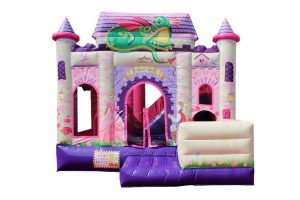Virtual Reality Business Solutions
Virtual reality is well known for giving video gamers a new experience, but business owners have spotted it as a new tool that can help them train employees, boost sales and more.
Engineers in production-driven industries can use VR to see how a design might work, without having to build real-life scale models. This can save massive amounts of money.
1. Marketing
VR has a lot of potential to boost business operations, whether for marketing or training. It allows employees, stakeholders and customers to experience a virtual world that is customized for each unique context, and provides businesses with a new way to connect with customers on an emotional level.
Increasingly, customers expect brands to use innovative technology to improve their experiences and meet their needs. Failing to do so can lead to them switching to competitors who offer more up-to-date solutions. Enterprise-grade extended reality solutions like VR, AR and MR have already made significant inroads into the business landscape.
For example, many retailers are introducing VR showrooms to allow customers to try out products from the comfort of their homes. While physical showrooms will remain important, virtual showrooms provide a convenient alternative for customers who do not live close to the store or have limited time. Similarly, Swedish furniture company Ikea offers an immersive virtual showroom that lets customers see how their furniture would fit in different rooms.
In the manufacturing sector, virtual reality helps engineers to gain a deeper understanding of complex technical issues by simulating multiple ‘what-if’ scenarios in a safe virtual environment. Likewise, medical experts can use virtual reality to test out drugs and equipment in a controlled space without risking the lives of patients or laboratory animals. In addition, architects can use VR to visualize their designs before they are constructed on the real world.
2. Training
As VR technology has evolved, it has become a valuable training tool. It can help employees get familiar with new software, products, and virtual reality business solutions systems without having to travel, or take time away from work. It also provides a more realistic experience, which can improve engagement and knowledge retention. This is especially true for soft skills and procedural training, where VR can offer an immersive environment that’s easier to connect with than a flat screen or written document.
A 2020 study by PWC found that virtual reality training can reduce learning time. This is largely due to the fact that it allows employees to practice in a safe, simulated environment. It can also enable them to complete more practice runs in the same amount of time as traditional classroom or e-learning training. This can save money, and make it easier to achieve ROI on the investment.
VR also makes it easier to analyse training results. The digital nature of VR simulations allows for real-time feedback to trainees, virtual reality business solutions and provides analytics in the form of reports and metrics. This can help companies make more informed decisions, and quickly demonstrate the effectiveness of a VR training program to senior stakeholders. This is particularly helpful when dealing with complex or dangerous scenarios that would be risky to replicate in the real world, but are critical for employee development.
3. Sales
Virtual reality (VR) and augmented reality (AR) have become powerful tools for business. The technology provides a unique opportunity to create engaging experiences for customers in a way that’s never been possible before. Architects are already using VR to show off finished concepts, while other industries like energy and manufacturing use it to help customers understand the size and scale of large products. With the rise of remote working and increasing consumer demand for digital customer experiences, businesses need to find ways to deliver on this expectation.
VR & AR show great promise as sales solutions; they allow representatives to tell a story that is personal, engages and is one that the buyer can own. It allows them to quickly break down complex ideas & problems into their component parts so that prospective buyers can achieve their eureka moment faster. It also means that they can demonstrate how their solution solves those problems, by taking the user to the problem in VR or bringing the product to them in AR regardless of its size complexity or geographic location. Moreover, it’s a scalable and cost efficient way to increase bottom line sales, reduce return rates and provide a differentiated experience for your customers & clients.
4. Design
VR offers every business the chance to rethink how they present to and engage with their customers. As such, it is a powerful sales enabler that can open the door to new customer insights.
This is especially true for the retail and construction industries. For instance, Lowe’s Home Improvement now allows customers to design their dream kitchen or bathroom, then walk through the finished space as a kind of virtual showroom. This also makes it easier for customers to understand complex product features, which boosts confidence in their purchase.
In manufacturing, virtual reality is transforming shop floors and production processes. Major car manufacturers use VR to create a digital model of a vehicle that allows engineers to test and refine designs before building the actual physical prototype. This eliminates the need for extensive and expensive real-world testing and reduces development time. In addition, many companies now use augmented reality to allow employees to interact with the virtual model, which highlights any dangerous areas or steps in the process.
In the future, it is likely that these technologies will evolve further. Virtual reality headsets could become more lightweight and compact, and they may require less power. Moreover, they will likely work in tandem with other emerging technologies such as artificial intelligence to deliver better experiences. This is called extended reality, or XR, and it includes technologies like head-mounted micro-displays that overlay information on the real world.
